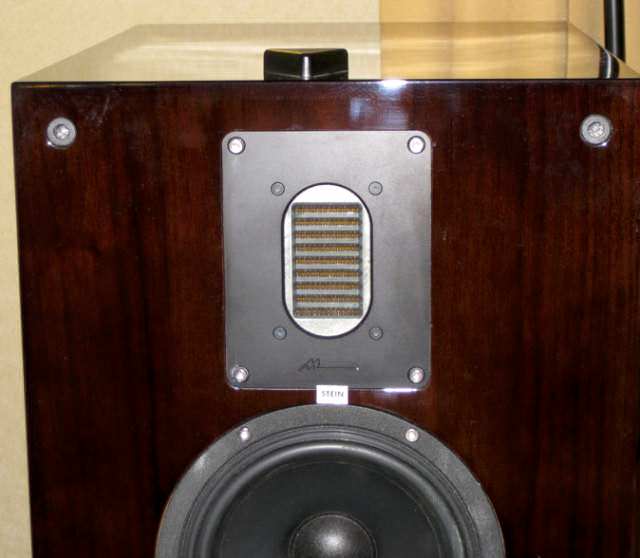“Since the advent of the CD, listeners have been deprived of the full experience of listening.” - Neil Young PonoPlayers...
Read More »
AXPONA 2010 Coverage
Just as I was leaving, the amiable distributor for Operetta components collared me and had me follow him to his demo room. He showed me something that Norbert Mundorf had dropped off. It was a room correction system called the Stein Harmonizer H2 comprised of a black box you plug into the wall, some polycarbonate equilateral triangles having approximately 1 inch sides, and some special tape. Here is a picture of the box, which is a 4 inch cube:

Depending on the size of your room, you will need to place one or more boxes around your listening space. Then you place the polycarbonate triangles on top of the speaker and elsewhere about the room, and finally you place the special tape between your tweeter and midrange driver and on reflective surfaces such as glass.


Voila. After leaving the system on for a period of time to work its magic, you will hear better imaging, more air around the instruments, and silkier highs.
No price has been announced.
Jason Victor Serinus of Stereophile took the only available brochure before I could get there so those are all the details I have. Jason will be reporting on the system in his report on AXPONA. Remember, you heard about it here first. :D
Jason’s report can be found here[/url]. Count me more skeptical than Jason. When a manufacturer only has a working theory of why his product works, I have to ask how he actually went about designing it. And my eyebrow’s become especially raised when the working theory is that the product “alters the molecular structure of the air.” Air does not have a molecular structure. Air is comprised of a variety of gases, primarily oxygen and nitrogen. Of course there are other things in the air as well, including water and particulate matter, not to mention you, you, your listening chair, and your audio system. Just what’s molecular structure is being change, how it is being changed, and how that affects sound, is a mystery.
George Jaton forwarded me the spec sheets on the Stein Harmonizer H2, triangle and tape. Here is what they, in part, have to say.
The Steinmusic Harmonizer H2a and H2b together with the Steinmusic Magic Stones form a mighty system to optimize the room acoustics. The basic principle is similar to a catalyser. Technically it works with capacitively activated crystals. The air molecules inside of the listening room are jogged’ trough the loudspeaker and thus transmit the sound information. In order to elongate the air molecules from their rest position it is necessary to spend energy first. It is much easier to move them if once moving. This phenomenon is similar to static and dynamic friction. To force a heavy piece of rock to move is not an easy task. But if it is once moving it can be much easier shifted further. The Steinmusic Harmonizer is working very similar, but rather at a level of ethereal states. The air is not moved in reality, but instead will be charged with information, which is causing the same effect. Now it can be elongated from its rest position without much effort and thus is able to transport sound events to the listeners ear in a completely different quality.
This explanation is more or less a working hypothesis, reflecting the trial to illustrate the principle of work of the Harmonizer. It does not claim to be complete, but from our point of view it is first of all the sound wise result what counts.
…
Magic Stones are triangular elements with a diameter of around 30mm. They are the ideal addition to the Steinmusic Harmonizer and considerably intensify its effectiveness.
…
Steinmusic E-pads are self-adhesive elements of 8mm by15mm size, which have a radical impact on the reproduction of music if placed at the right position. They work at the level of interaction of molecules and thus produce profound and measurable changes of the material properties. This may be related to the spectrum of resonances as well as the torsion force, the elastic modulus and the conductivity. So it is kind of resonance control, but working by the capacitive influence on the level of interaction between molecules.
Something must have been lost in translation.
Pages: 1 2 3 4 5 6 7 8 9 10 11 12 13 14 15 16 17 18 19 20 21 22 23 24 25 26 27 28 29 30 31 32 33 34 35

